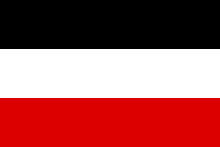German federal election, 1878
German federal election, 1878

|
| 30 July 1878 (1878-07-30) |
|
|
All 397 seats in the Reichstag
199 seats needed for a majority |
| Turnout |
63.4% |
| |
First party |
Second party |
Third party |
| |
|
|
|
| Party |
NLP |
Centre |
KP |
| Last election |
128 seats |
93 seats |
40 seats |
| Seats won |
99 |
94 |
59 |
| Seat change |
 29 29 |
 1 1 |
 19 19 |
| Popular vote |
1,331,000 |
1,328,100 |
749,500 |
| Percentage |
23.1% |
23.1% |
13.0% |
| Swing |
 4.1% 4.1% |
 1.7% 1.7% |
 3.2% 3.2% |
|
| |
Fourth party |
Fifth party |
Sixth party |
| |
|
|
|
| Party |
DRP |
DFP |
LV |
| Last election |
38 seats |
35 seats |
13 seats |
| Seats won |
57 |
26 |
10 |
| Seat change |
 19 19 |
 9 9 |
 3 3 |
| Popular vote |
785,800 |
385,100 |
156,000 |
| Percentage |
13.6% |
6.7% |
2.7% |
| Swing |
 5.7% 5.7% |
 1.1% 1.1% |
 0.2% 0.2% |
|
| |
Seventh party |
Eighth party |
|
| |
|
|
|
| Party |
DHP |
SPD |
|
| Last election |
4 seats |
12 seats |
|
| Seats won |
10 |
9 |
|
| Seat change |
 4 4 |
 3 3 |
|
| Popular vote |
100,000 |
437,100 |
|
| Percentage |
1.7% |
7.6% |
|
| Swing |
 0.1% 0.1% |
 1.5% 1.5% |
|
|
Federal elections were held in Germany on 30 July 1878.[1] The National Liberal Party remained the largest party in the Reichstag, with 99 of the 397 seats.[2] Voter turnout was 63.4%.[1]
Results
| Party |
Votes[a] |
% |
Seats |
+/– |
|---|
| National Liberal Party | 1,331,000 | 23.1 | 99 | −29 |
| Centre Party | 1,328,100 | 23.1 | 94 | +1 |
| German Reich Party | 785,800 | 13.6 | 57 | +19 |
| German Conservative Party | 749,500 | 13.0 | 59 | +19 |
| Social Democratic Party | 437,100 | 7.6 | 9 | −3 |
| German Progress Party | 385,100 | 6.7 | 26 | −9 |
| Polish Party | 210,100 | 3.6 | 14 | 0 |
| Alsace-Lorraine Party | 178,900 | 3.1 | 15 | 0 |
| Liberal Union | 156,000 | 2.7 | 10 | −3 |
| German-Hanoverian Party | 100,000 | 1.7 | 10 | +6 |
| German People's Party | 66,100 | 1.1 | 3 | −1 |
| Danish Party | 18,000 | 0.3 | 1 | 0 |
| Others | 14,700 | 0.3 | 0 | 0 |
| Invalid/blank votes | 20,000 | – | – | – |
| Total | 5,780,900 | 100 | 397 | 0 |
| Registered voters/turnout | 9,128,300 | 63.4 | – | – |
| Source: Nohlen & Stöver, DGDB |
a Figures for votes are rounded.[1]
| Popular Vote |
|---|
|
|
|
|
|
| Zentrum |
|
24.09% |
| NLP |
|
23.10% |
| DRP |
|
13.64% |
| DKP |
|
13.01% |
| SAP |
|
7.59% |
| DFP |
|
6.69% |
| Poles |
|
3.65% |
| Other |
|
8.24% |
| Reichstag seats |
|---|
|
|
|
|
|
| NLP |
|
24.94% |
| Zentrum |
|
23.68% |
| DKP |
|
14.86% |
| DRP |
|
14.36% |
| DFP |
|
6.55% |
| Poles |
|
3.53% |
| SAP |
|
2.27% |
| Other |
|
9.82% |
References
- ↑ 1.0 1.1 1.2 Nohlen, D & Stöver, P (2010) Elections in Europe: A data handbook, p762 ISBN 978-3-8329-5609-7
- ↑ Nohlen & Stöver, p788
|
|---|
| | Parliamentary elections | |
|---|
| | Presidential elections | |
|---|
| | European elections | |
|---|
| | Referendums | |
|---|
|
- See also elections in Baden-Württemberg
- Bavaria
- Berlin
- Brandenburg
- Bremen
- Hamburg
- Hesse
- Lower Saxony
- Mecklenburg-Vorpommern
- North Rhine-Westphalia
- Rhineland-Palatinate
- Saarland
- Saxony
- Saxony-Anhalt
- Schleswig-Holstein
- Thuringia
- East Germany
- East Prussia
- Lower Silesia
|
|
